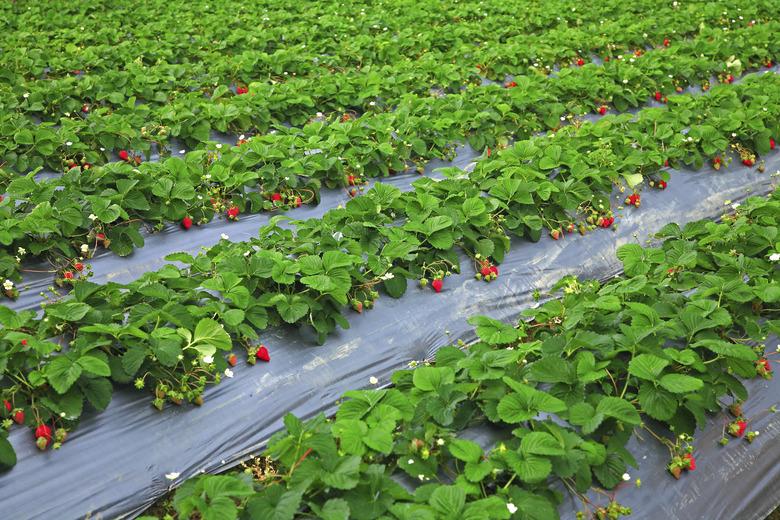How To Plant Strawberries In Texas
Everything's bigger in Texas, even the strawberry harvest if you know how to deal with the hot Texas weather. Strawberries (Fragaria ananassa) may struggle with the summer heat in east and south Texas, but the state's heat also provides a unique opportunity for strawberry growers. Fall planting helps to protect strawberries from the worst of the heat, and it also allows Texas gardeners to enjoy a crop of berries earlier than gardeners in much of the rest of the country.
Annual vs. Perennial Strawberries
Strawberries are hardy perennials in U.S. Department of Agriculture hardiness zones 5 to 8, which means they're able to survive through multiple growing seasons in north Texas. In USDA zones 9 to 10, however, strawberries are most commonly grown as cool-season annuals; that is, they're planted in the fall, bear fruit in the spring, and are tilled under in the summer to be replaced with new plants the following fall.
In central and east Texas, including the Dallas-Fort Worth area, plant strawberries in September. In the hottest parts of south Texas, wait until November. In north Texas, plant your strawberries in late winter or early spring. It's a good idea to have row covers handy in case newly planted strawberries need some protection from strong winds or cold temperatures.
Strawberry Variety Selection
Spring-bearing strawberry varieties ripen in February in the hotter parts of Texas and as late as June in north Texas. The spring-bearing varieties best suited to growing in Texas include Chandler, Sequoia, and Douglas. Texas gardeners should avoid ever-bearing and day-neutral varieties; these types of strawberry do best in cooler climates and don't fare well in Texas, especially in the southern section of the state.
Strawberry Soil Types and Planting
Strawberries prefer full sun, but they will tolerate some afternoon shade. They also require well-drained soil and perform best in soil that's neutral to slightly acidic, with a soil pH level between 6.5 and 7. Strawberries can tolerate alkaline soils with pH between 7.5 to 7.8, although plants in these soils may suffer from iron deficiency and require supplements.
Strawberry plants grow best when planted in raised rows, which help to improve drainage and air circulation. Rows should be spaced 12 inches apart, with individual plants spaced 12 inches apart within the rows. Place the plants deep enough that their roots are fully covered but so that the crown where the leaves emerge is not buried.
Strawberry Fertilization and Watering
Fertilize your strawberry plants with a 15-5-10 fertilizer at planting time, mixing about 2 cups of the selected fertilizer into the soil of each 25-foot row of berry plants. Switch to a 21-0-0 nitrogen fertilizer for application every three weeks during the growing season, applying about 3/4 cup of the fertilizer per row.
Water your strawberry plants every day for the first two weeks after planting to encourage the establishment of the transplants. Reduce the frequency of watering through the winter, but water the strawberries enough to keep the soil consistently moist, especially in east and south Texas.
